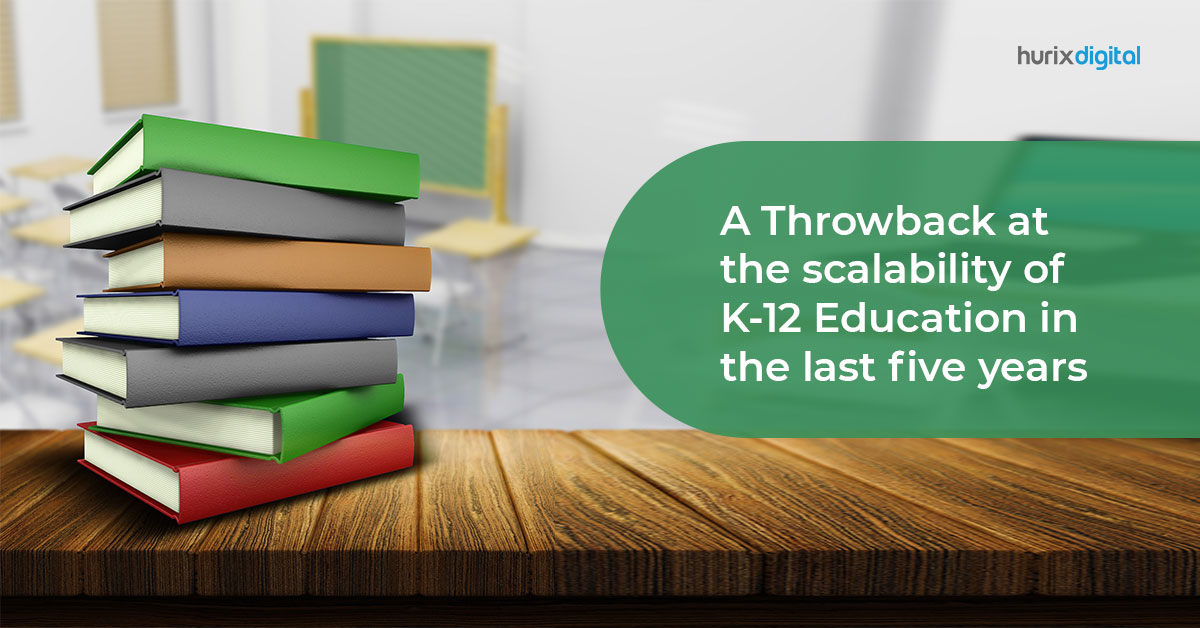
A Throwback to the Scalability of K-12 Education in the Last 5 Years
Summary
This article reflects on the scalability of K-12 education over the past five years, highlighting key developments in digital learning, infrastructure, and educational models that have shaped the sector’s growth.
K-12 education is, without doubt, has been the most popular education model worldwide for decades now. However, this traditional and relatively static mode of education has changed drastically recently. The COVID-19 pandemic has thrown a curveball into the mix, with students, teachers, and schools adapting quickly to an online learning mode.
Table of Contents:
- The K-12 Education Space Pre-Pandemic
- The K12 Education Space During the Pandemic
- The K-12 Education Space Post-Pandemic
- Challenges the K-12 Education Sector Has Faced These Past Few Years
- Conclusion
This article will examine how the K-12 education space has changed and the challenges K-12 education companies have faced over the last five years.
-
The K-12 Education Space Pre-Pandemic
Before the COVID-19 pandemic, the K-12 education space was the same as it was for decades; traditional classroom-based learning, in which teachers delivered instruction to students in a physical classroom setting. In addition, curriculum standards and standardized testing were heavily emphasized to prepare students for college and beyond.
Some classrooms had access to digital technology, but it was mainly used to supplement traditional instruction rather than as the primary mode of delivery. Online education and virtual classrooms were less common than they are now, and K-12 companies were slowly dipping their toes into the online education space. There were concerns about the achievement gap and disparities in educational opportunities for low-income and minority students regarding equity and access.
These issues, however, were being addressed, but not as fast as they could have been, and then came the pandemic.
-
The K12 Education Space During the Pandemic
The COVID-19 pandemic had a significant impact on K-12 education, as schools were forced to close their doors to in-person learning and switch to remote instruction. This abrupt change required substantial adjustment on the part of both teachers and students.
In addition, many schools and districts struggled to provide adequate resources and support for remote learning, particularly for low-income students who may need access to reliable internet or smart devices at home.
That being said, in response to the pandemic, schools implemented new technologies and tools to support remote learning, such as online platforms for virtual classrooms, and worked to improve communication between teachers, students, and parents.
This was when K-12 education companies started to see rapid growth.
-
The K-12 Education Space Post-Pandemic
The pandemic was the best thing that happened for K-12 companies. It launched the entire world of K-12 education into a modern digital era.
While In-person learning has resumed worldwide, the pandemic has accelerated the adoption of technology in the classroom, and many schools are now using online platforms and tools to support remote and blended learning. K-12 education companies have adapted accordingly to meet the needs and demands of the k-12 education sector and have grown into a 60-billion-dollar industry in 2023.
While K-12 education and K-12 education companies in tow have scaled a lot to meet the demands of this new era, there are a number of challenges that need to be solved.
-
Challenges the K-12 Education Sector Has Faced These Past Few Years
One of the biggest challenges holding K-12 companies back is the need for more school resources and funding. Many schools in the poorer districts need help finding the funding required to provide the necessary resources to support the needs of these new digital infrastructures.
However, efforts to increase funding for low-income schools have been made in the last five years, such as implementing Title I funding, which provides additional resources to schools with a high percentage of low-income students. This has gone a long way in closing the resource and support gap between high and low-income schools.
The second barrier to scalability in K-12 education is the need for more qualified and digitally adept teachers. Shifting to this new digital mode of education was probably more challenging for teachers, especially those who never really needed to improve their proficiency with modern digital technology.
Schools and K-12 education companies had to go over and above to train teachers whose primary education tools for decades were textbooks and blackboards to start using technology to teach lessons online. Many low-income schools need help to recruit and retain highly qualified teachers.
However, there have been efforts to address this issue in the last five years, such as implementing alternative certification programs. This has contributed to an increase in the number of highly qualified teachers in schools that traditionally have difficulty attracting them.
-
There’s Good News
Despite these obstacles, there have been significant progress and technological advancements in K-12 education over the last five years. Many schools, for example, have embraced and are implementing new and effective methods of imparting education, such as
- Personalization, which uses adaptive learning software to adjust the difficulty of content based on a student’s progress,
- the use of AI to track student progress and to provide teachers with crucial data on their strengths and weaknesses, blended learning,
- The flexibility of learning from anywhere and more.
One of the best things to happen with this adaptation of new technology is the ability for all educational content to be more inclusive of students with special needs. Accessibility to digital education content has opened up doors for students with disabilities to be able to learn and keep pace with their peers in a format that works best for them.
Wrapping Up
K-12 education has scaled a lot in the past five years, but it has faced several challenges. That being said, in the last five years, advancements and progress have been made in this area.
However, the pandemic has brought about a plethora of good changes for the K-12 education sector and K-12 companies; it has also highlighted the need for more investment in technology and infrastructure. Despite everything that has happened in the past five years, the K-12 education sector has shown that if the need arises, it is prepared to scale up to meet the needs of everyone alike.
If you are looking to move into the digital era in the K-12 education space, Hurix Digital is the partner for you. With our simple-to-use platform, our innovative technology and expert team provide a comprehensive suite of e-learning tools and resources; you can take the next step to lunge forward into the digital era of K-12 education.
Reach out today to learn more.

Performance, Results, Growth, and Life-Long Learning define my professional life. I am passionate about making workplace learning planful, purposeful, and impactful. I take pride in partnering with clients and bringing them the best in learning design and creating solutions that address business challenges.




